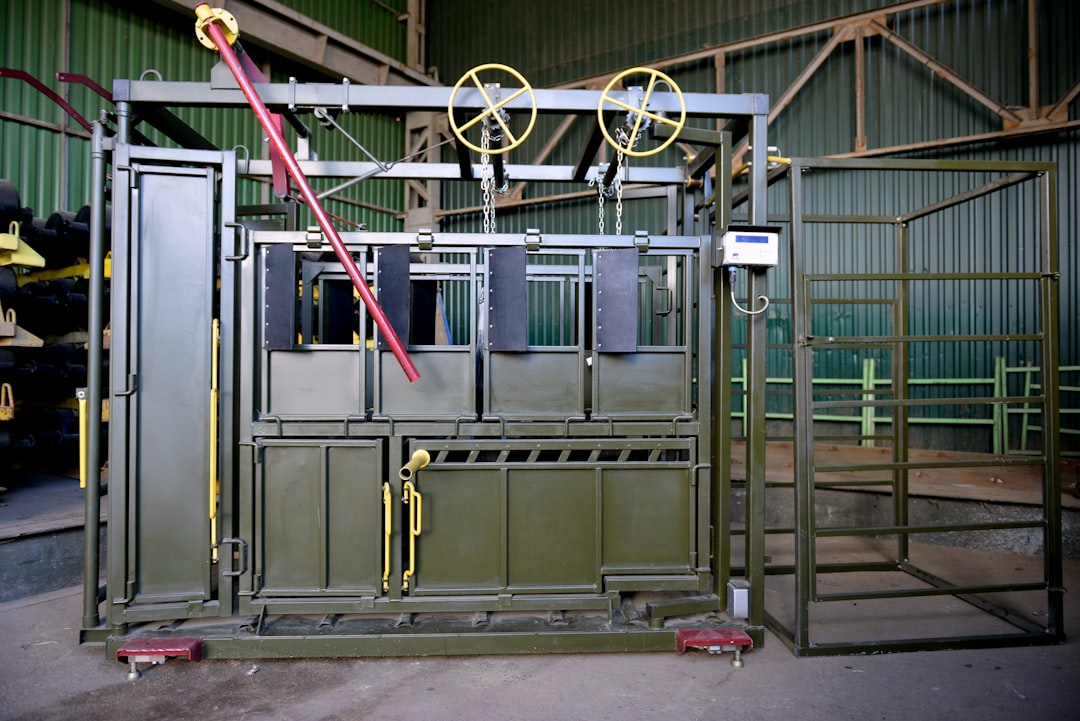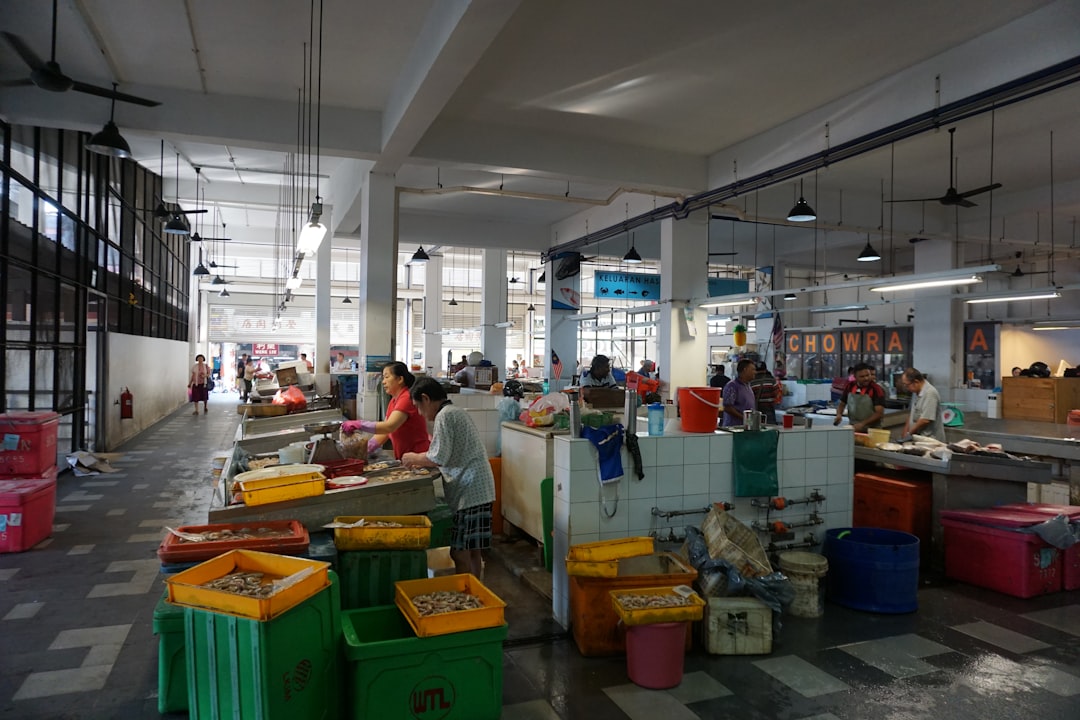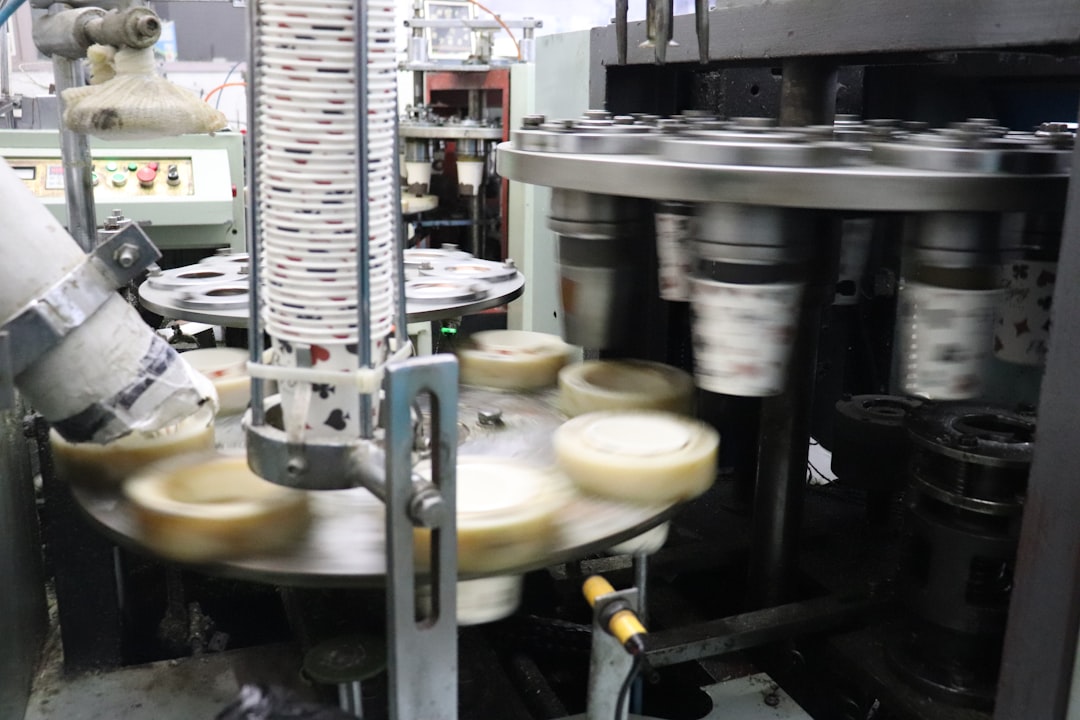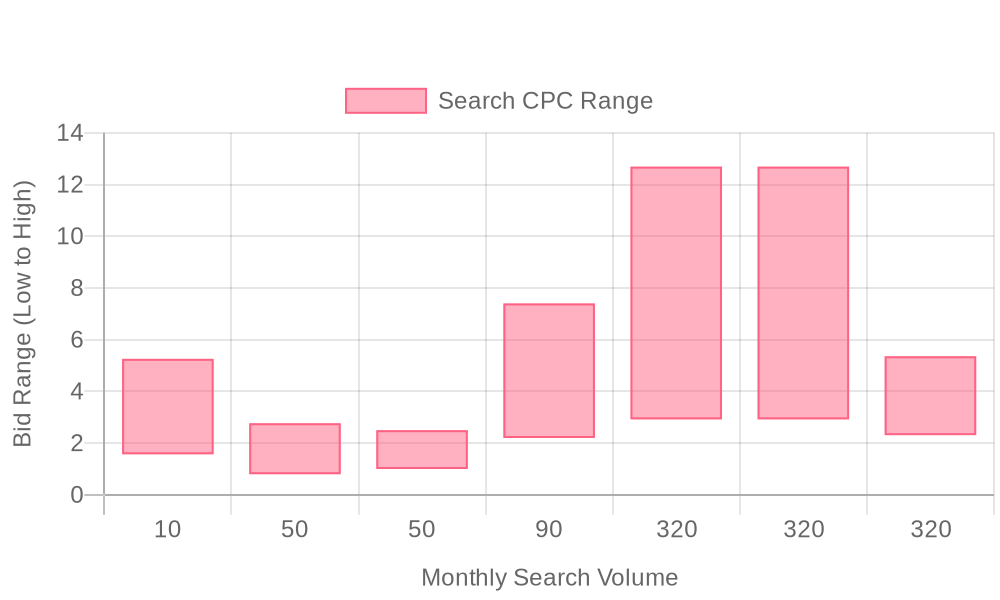
Supercharge your lead generation with a FREE Google Ads audit - no strings attached! See how you can generate more and higher quality leads
Get My Free Google Ads AuditFree consultation

No commitment
Supercharge your lead generation with a FREE LinkedIn Ads audit - no strings attached! See how you can generate more and higher quality leads
Get My Free Google Ads AuditFree consultation

No commitment
Supercharge your lead generation with a FREE Meta Ads audit - no strings attached! See how you can generate more and higher quality leads
Get My Free Google Ads AuditGet My Free LinkedIn Ads AuditGet My Free Meta Ads AuditFree consultation

No commitment
Supercharge your lead generation with a FREE Google Ads audit - no strings attached! See how you can generate more and higher quality leads
Get My Free Google Ads AuditFree consultation

No commitment
In today's competitive B2B landscape, navigating the complexities of effective lead generation requires a nuanced blend of both digital and offline strategies. As an integral part of this ecosystem, Google Ads offers food processing equipment suppliers the opportunity to engage high-intent prospects precisely when they are researching solutions. It bridges the critical gap between awareness initiatives and direct sales interactions by capturing decision-makers' attention right when they need specialized equipment solutions. Common challenges include a lack of visibility into anonymous traffic and missing high-value prospects. Modern solutions can help by tracking anonymous visitors and integrating them into customer match lists, ensuring that your ad spend targets real decision-makers rather than cold, unqualified traffic. Additionally, Google Ads provides benefits such as highly targeted campaigns that speak the unique language of the food processing industry and comprehensive ROI measurement by connecting digital engagements with offline sales outcomes.

Food processing equipment suppliers operate in a market where precision, speed, and tailored outreach directly influence deal velocity and sales team performance. B2B buyers in this sector rely on digital channels to source compliant, high-capacity solutions for demanding production environments, so capturing these leads with laser-focused Google Ads campaigns is essential to outpace competitors.
A data-first approach in Google Ads for food processing enables suppliers to identify and engage the highest-value prospects while minimizing wasted spend. By leveraging real-time visitor identification, marketers can move beyond anonymous web clicks to pinpoint decision-makers and companies actively researching equipment solutions, ensuring outreach is consistently relevant and timely.
Developing keyword and audience strategies tailored to food processing equipment buyers means focusing on high-intent search terms, such as “industrial food mixer supplier,” and segmenting audiences by company size, geography, and purchase readiness. Dynamic audience updates allow marketers to deploy budget to the accounts with the strongest purchase signals and drive higher conversion rates.
Aligning landing pages and ad creatives to drive maximum conversions involves more than just matching headlines to keywords. For this sector, messaging should highlight operational throughput, certifications, and ROI calculators, while landing pages must offer spec sheets, configuration tools, and proof of compliance. This step-by-step guide for creating Google Ads campaigns for food equipment companies provides actionable tips for aligning creative assets with buyer needs.
Continuously refining and optimizing campaign performance is critical for improving Google Ads ROI for food industry suppliers. Advanced conversion tracking that captures both online and offline touchpoints, along with integrating CRM deal stages and tracking sales calls, allows for closed-loop attribution to measure true impact on revenue. To deepen your attribution strategy, explore our guide to single vs. multi-touch attribution models.
Integrating Google Ads with existing marketing channels further amplifies reach and efficiency for food processing equipment marketing. Syncing enriched audiences and lead data directly to Google Ads, Salesforce, or HubSpot enables seamless remarketing, nurtures high-value accounts, and ensures sales teams act on every qualified opportunity.
Addressing common pain points such as delayed follow-ups is crucial; automatic CRM task creation based on high-value page visits and remarketing cohorts ensures that both sales and ads operate in sync to drive engagement. This approach enables revenue teams to capitalize on every signal of intent, shorten sales cycles, and consistently outperform industry benchmarks in food processing equipment advertising. If you're ready to modernize your lead generation, get started for free with Sona.

Food processing equipment suppliers operate in a market where procurement cycles are intricate and buying decisions hinge on highly specific needs. Google Ads delivers unique value by intercepting decision-makers at the exact moment they are researching and comparing solutions, outpacing slower, general awareness tactics. For additional insights on digital strategies, explore our blog.
Ready to improve targeting, measurement, and ROI? Get started for free with Sona.

One-size-fits-all campaigns frequently underperform in the industrial equipment space. Segmenting accounts based on company size, purchase history, and real-time activity enables the creation of specialized campaigns that address the unique needs of each buyer segment. This targeted approach, supported by synchronized CRM and ad audience data, increases engagement and drives higher-quality leads through the funnel. To see how these strategies can work for your business, get started for free with Sona.

Food processing equipment suppliers operate in a competitive B2B landscape where sustained growth depends on uncovering untapped digital channels and optimizing every stage of the buyer journey. Focused strategies combining vertical expertise, data-driven targeting, and integrated campaign management help suppliers uncover hidden revenue streams while building long-term industry authority.
Missed high-value prospects are often the result of fragmented tracking or outdated nurture workflows. Modern platforms now provide unified attribution across online and offline touchpoints, ensuring every interaction—whether a trade show badge scan or a digital RFQ—is captured and routed to the right sales team. This holistic view enables revenue leaders to prioritize follow-up, allocate budget efficiently, and close the loop on every opportunity in the pipeline. Ready to optimize your growth strategy? Get started for free with Sona.

Audience segmentation is the foundation of high-performing digital marketing for food equipment suppliers. With a market defined by diverse buyers—ranging from single-site restaurants to large-scale industrial food processors—precision targeting ensures that messaging and offers reach the right decision-makers at exactly the right time. This approach delivers superior engagement, minimizes wasted ad spend, and elevates conversion rates by aligning outreach with each segment’s unique pain points and purchasing cycles.
When segmentation, intent data, and conversion validation work together, food processing equipment suppliers can execute high-impact, personalized campaigns that consistently outperform industry benchmarks for Google Ads ROI. This level of orchestration not only drives measurable lift in lead quality but also transforms digital marketing from a cost center into a predictable engine for revenue growth. To take your audience segmentation to the next level, get started for free with Sona.

| Industry | Keyword | Monthly Search Volume | Competition Level | Low Bid | High Bid |
| Food Processing Equipment Suppliers | food manufacturing machinery | 10 | LOW | 1.57 | 5.26 |
| Food Processing Equipment Suppliers | meat cutting supplies | 50 | HIGH | 0.8 | 2.77 |
| Food Processing Equipment Suppliers | ice cream manufacturing equipment | 50 | MEDIUM | 1 | 2.5 |
| Food Processing Equipment Suppliers | food production machinery | 90 | LOW | 2.2 | 7.4 |
| Food Processing Equipment Suppliers | food processing equipment suppliers | 320 | LOW | 2.92 | 12.69 |
| Food Processing Equipment Suppliers | food processing equipment manufacturers | 320 | LOW | 2.92 | 12.69 |
| Food Processing Equipment Suppliers | food manufacturing equipment | 320 | MEDIUM | 2.31 | 5.36 |
Food processing equipment suppliers operate in a highly competitive B2B environment where buyers conduct extensive research before making purchasing decisions. Capturing these decision-makers at the precise moment they search for solutions is essential for maximizing lead quality and driving revenue growth.
A data-driven keyword strategy focuses on mapping out the full spectrum of buyer intent, from broad research queries to highly specific purchase-ready searches. Effective campaigns segment keywords into product categories, compliance requirements, and technical specifications, ensuring ads appear for both early-stage researchers and late-stage buyers. For example, targeting terms like “industrial food mixer for sale,” “HACCP-compliant conveyor system,” or “bulk meat slicer supplier” enables suppliers to attract prospects with clear purchase intent while maintaining relevance for those gathering information. For step-by-step guidance, developing Google Ads for a food equipment company can help structure campaigns that align with industry needs.
Ready to capture more high-intent leads from your digital campaigns? Get started for free with Sona.
Effective keyword selection is foundational in Google Ads for food processing equipment suppliers. Begin by segmenting keywords according to specific services, such as “industrial meat slicers” or “automated bottling lines,” to capture buyers searching for distinct solutions. Localize keywords where relevant, adding regional identifiers or city names to connect with plant managers in targeted territories. Incorporate long-tail keywords that reflect commercial intent, such as “FDA-approved food conveyor system supplier” or “bulk purchase commercial freeze dryer,” to attract high-value leads further along the buying cycle.
Modern platforms enable marketers to look beyond anonymous search volume and identify which companies are clicking on high-intent terms. This visitor-level insight allows for dynamic budget allocation, focusing efforts on accounts demonstrating real purchasing behavior. As prospects move through the funnel, audience lists are automatically refined and synced into campaign targeting, ensuring ads remain relevant as buyer intent evolves.
For a real-world look at Google Ads strategies in the food industry, see this case study on fast food Google Ads ROI.
Compelling ad copy addresses real-world challenges faced by food processing operations. Highlight critical pain points—such as regulatory compliance, production downtime, or sanitation standards—directly in headlines and descriptions. Establish trust by referencing certifications, industry affiliations, or well-known client partnerships, and always include a clear call to action that communicates urgency, whether it’s “Request a Custom Quote Today” or “Book a Live Demo.”
With dynamic intent signals feeding into Google Ads, messaging can be fine-tuned in real time. As buyer interest shifts or new decision-makers engage, campaigns automatically serve the most relevant ad variants, increasing the likelihood of conversion. Integrating ad performance data with CRM records ensures that high-performing messages are scaled efficiently, while underperforming creative is quickly retired.
A seamless transition from ad to landing page is essential for converting prospects into qualified leads. Each landing page should reinforce the ad’s promise with detailed product information, interactive ROI calculators, and clear calls to action such as “Download Technical Specs” or “Schedule a Plant Assessment.” Trust signals—like video testimonials from food manufacturers or third-party compliance certifications—help reduce friction at the point of conversion.
Visitor identification tools allow marketing teams to personalize landing page content based on company profile and buying stage. For instance, a returning visitor from a major dairy producer might see case studies tailored to large-scale pasteurization equipment, while a new lead could receive educational content on regulatory best practices. Real-time engagement data is captured across all landing page interactions, delivering actionable insights to sales teams for immediate follow-up.
Continuous optimization is the engine of Google Ads ROI for food processing equipment suppliers. Every conversion—whether a form submission, phone inquiry, or offline event such as a trade show meeting—is tracked and attributed back to the originating campaign. Smart bidding algorithms adjust budgets in response to real-time intent signals, prioritizing spend on high-converting keywords and audiences.
Offline conversions, such as purchase orders issued after initial web engagement, are synced back into the digital analytics stack. This closed-loop attribution provides a comprehensive view of which ads and keywords drive true revenue, not just leads. With enriched data flowing between Google Ads, CRM, and marketing automation platforms, campaign performance is continually benchmarked and refined, ensuring every dollar spent drives measurable business growth.
Ready to see these strategies in action? Get started for free with Sona.
Expanding your visibility as a food processing equipment supplier requires a multi-layered approach that blends digital precision with strategic alliances. By combining advanced audience targeting, intent-driven messaging, and integrated relationship management, suppliers can capture heightened attention and outpace competitors in both established and emerging markets.
Tailored campaigns that adapt to shifting buyer behaviors and intent signals ensure messaging always aligns with audience needs. This level of precision consistently leads to stronger engagement, increased lead quality, and measurable improvements in return on investment for food processing equipment suppliers. To implement these strategies and boost your lead generation, get started for free with Sona.
As we wrap up our exploration of leveraging Google Ads for marketing food processing equipment, it's clear that targeted strategies and insightful data can significantly boost your visibility and sales in this specialized niche. By focusing on the unique needs and behaviors of your target audience, you can craft compelling ad campaigns that resonate and convert.
Throughout this article, we've addressed the core challenges faced by food processing equipment suppliers, such as standing out in a crowded market and effectively reaching decision-makers. We've discussed key strategies like keyword optimization, audience segmentation, and utilizing ad extensions to enhance your campaign's reach and impact.
Imagine the transformation your business could experience by implementing these strategies and harnessing the power of data-driven insights. With the right approach, you have the potential to not only increase your market presence but also drive meaningful engagement and growth.
To truly unlock these opportunities, consider exploring how our platform can support your advertising efforts. Start for free to experience our platform and its capabilities, and take the next step in revolutionizing your marketing strategy today.
Best practices include using highly targeted campaigns that focus on high-intent search terms, aligning ad creatives with industry-specific messaging, and continuously refining campaigns through data-driven insights to improve ROI.
Suppliers can optimize campaigns by leveraging real-time visitor identification, segmenting audiences by company size and purchase readiness, and integrating CRM data for closed-loop attribution.
The article doesn't specify an exact budget but suggests focusing spend on high-value accounts and optimizing campaigns based on real-time intent signals to ensure cost-efficiency.
Keywords should focus on high-intent search terms such as 'industrial food mixer supplier' and incorporate long-tail keywords reflecting commercial intent like 'FDA-approved food conveyor system supplier.'
Google Ads can improve sales by intercepting decision-makers during their research phase, using targeted campaigns to engage high-intent prospects, and integrating digital engagements with offline sales outcomes for comprehensive ROI measurement.
Join results-focused teams combining Sona Platform automation with advanced Google Ads strategies to scale lead generation

Connect your existing CRM

Free Account Enrichment

No setup fees
No commitment required

Free consultation

Get a custom Google Ads roadmap for your business
Join results-focused teams combining Sona Platform automation with advanced Meta Ads strategies to scale lead generation

Connect your existing CRM

Free Account Enrichment

No setup fees
No commitment required

Free consultation

Get a custom Google Ads roadmap for your business
Join results-focused teams combining Sona Platform automation with advanced LinkedIn Ads strategies to scale lead generation

Connect your existing CRM

Free Account Enrichment

No setup fees
No commitment required

Free consultation

Get a custom Google Ads roadmap for your business
Join results-focused teams using Sona Platform automation to activate unified sales and marketing data, maximize ROI on marketing investments, and drive measurable growth

Connect your existing CRM

Free Account Enrichment

No setup fees
No commitment required

Free consultation

Get a custom Google Ads roadmap for your business
Over 500+ auto detailing businesses trust our platform to grow their revenue
Join results-focused teams using Sona Platform automation to activate unified sales and marketing data, maximize ROI on marketing investments, and drive measurable growth

Connect your existing CRM

Free Account Enrichment

No setup fees
No commitment required

Free consultation

Get a custom Google Ads roadmap for your business
Over 500+ auto detailing businesses trust our platform to grow their revenue
Join results-focused teams using Sona Platform automation to activate unified sales and marketing data, maximize ROI on marketing investments, and drive measurable growth

Connect your existing CRM

Free Account Enrichment

No setup fees
No commitment required

Free consultation

Get a custom Google Ads roadmap for your business
Over 500+ auto detailing businesses trust our platform to grow their revenue
Our team of experts can implement your Google Ads campaigns, then show you how Sona helps you manage exceptional campaign performance and sales.
Schedule your FREE 15-minute strategy sessionOur team of experts can implement your Meta Ads campaigns, then show you how Sona helps you manage exceptional campaign performance and sales.
Schedule your FREE 15-minute strategy sessionOur team of experts can implement your LinkedIn Ads campaigns, then show you how Sona helps you manage exceptional campaign performance and sales.
Schedule your FREE 15-minute strategy sessionOur team of experts can help improve your demand generation strategy, and can show you how advanced attribution and data activation can help you realize more opportunities and improve sales performance.
Schedule your FREE 30-minute strategy sessionOur team of experts can help improve your demand generation strategy, and can show you how advanced attribution and data activation can help you realize more opportunities and improve sales performance.
Schedule your FREE 30-minute strategy sessionOur team of experts can help improve your demand generation strategy, and can show you how advanced attribution and data activation can help you realize more opportunities and improve sales performance.
Schedule your FREE 30-minute strategy sessionOur team of experts can help improve your demand generation strategy, and can show you how advanced attribution and data activation can help you realize more opportunities and improve sales performance.
Schedule your FREE 30-minute strategy session





Launch campaigns that generate qualified leads in 30 days or less.
